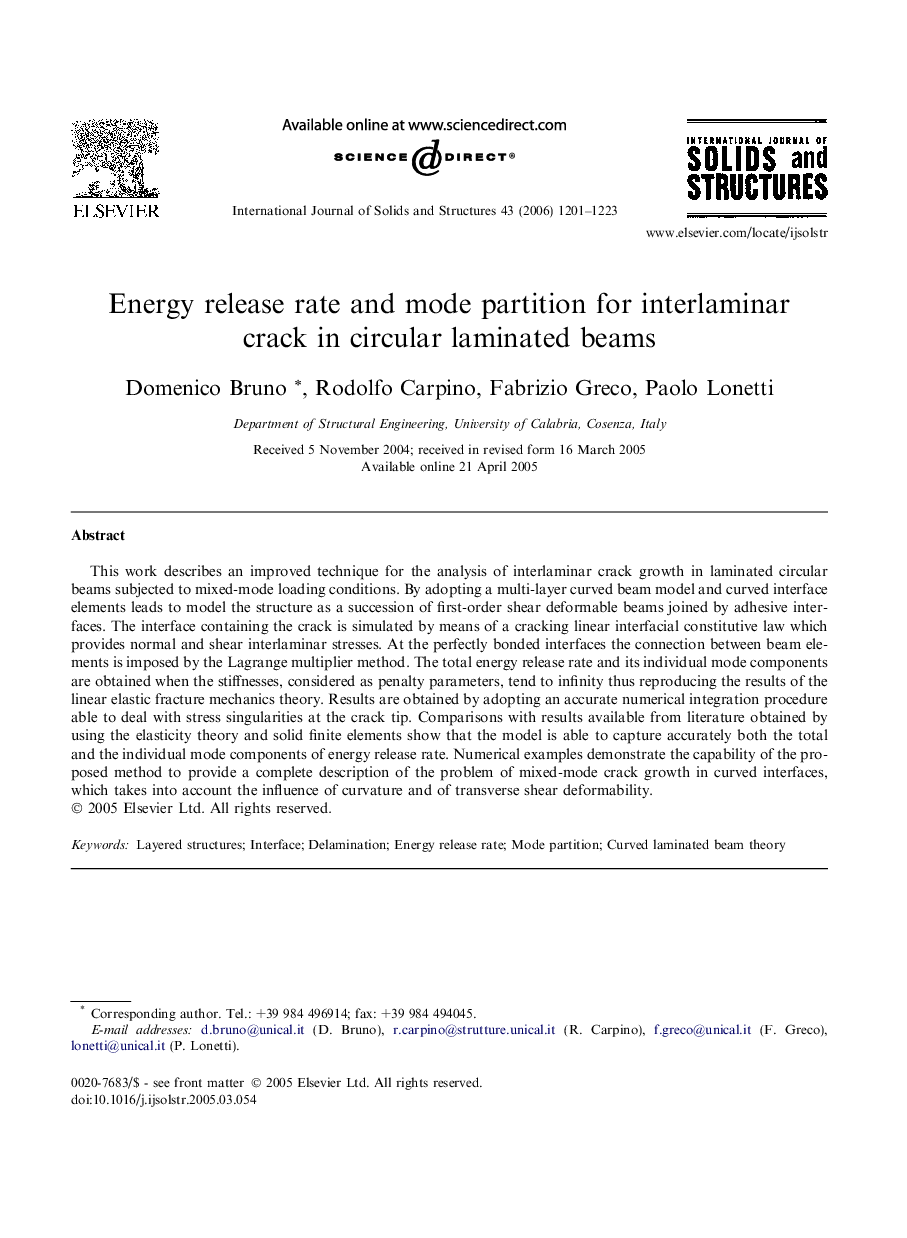| Article ID | Journal | Published Year | Pages | File Type |
|---|---|---|---|---|
| 281009 | International Journal of Solids and Structures | 2006 | 23 Pages |
This work describes an improved technique for the analysis of interlaminar crack growth in laminated circular beams subjected to mixed-mode loading conditions. By adopting a multi-layer curved beam model and curved interface elements leads to model the structure as a succession of first-order shear deformable beams joined by adhesive interfaces. The interface containing the crack is simulated by means of a cracking linear interfacial constitutive law which provides normal and shear interlaminar stresses. At the perfectly bonded interfaces the connection between beam elements is imposed by the Lagrange multiplier method. The total energy release rate and its individual mode components are obtained when the stiffnesses, considered as penalty parameters, tend to infinity thus reproducing the results of the linear elastic fracture mechanics theory. Results are obtained by adopting an accurate numerical integration procedure able to deal with stress singularities at the crack tip. Comparisons with results available from literature obtained by using the elasticity theory and solid finite elements show that the model is able to capture accurately both the total and the individual mode components of energy release rate. Numerical examples demonstrate the capability of the proposed method to provide a complete description of the problem of mixed-mode crack growth in curved interfaces, which takes into account the influence of curvature and of transverse shear deformability.
